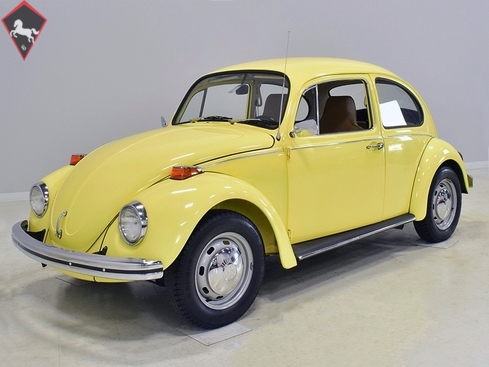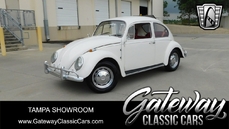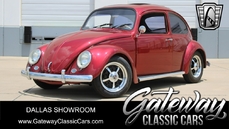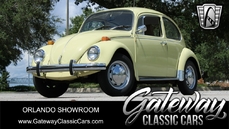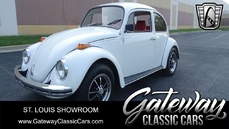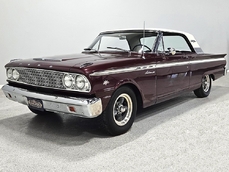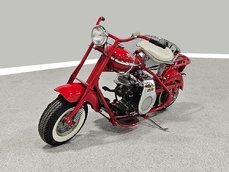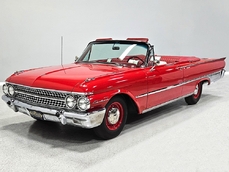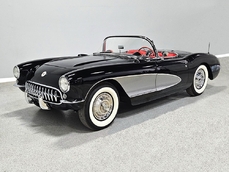Volkswagen Käfer Typ1 1600 cc flat-4 1970
Allgemeine Beschreibung :
There are plenty of cars that can be considered popular, but how many can be called beloved? The perky VW Beetle, designed to be rugged and simple, won the world’s hearts with its eager personality, fun driving dynamics, and, of course, the cute look. There are stories that VW engineers didn’t change it much because they couldn’t come up with anything better, but the truth is that they kept selling in record numbers—why mess with success? Today, Beetles remain great entry-level collector cars that are still welcome everywhere they go and few other marques feature such strong parts and knowledge support. Everything you need to keep your Beetle in top health is a phone call away, including expert advice. If you’re interested in a fun old car that you can use as a real vehicle, we might humbly suggest this tidy little 1970 Volkswagen Beetle.
We’ll admit that we’re Volkswagen people here at Harwood Motors. We have family members who are Beetle experts and who perform high-quality restorations on these little guys. So we’re pretty picky about the cars that come in, especially the Beetles. Fortunately, this bright yellow Beetle has no skeletons in its closet and is everything that it appears to be. It enjoys the myriad of upgrades that happened for the 1968 model year, but it is not a Super Beetle, which is a considerably different machine, so it keeps that early Bug spirit 100% intact. The bright yellow paint was applied a few years ago and while it’s not show-quality, it is holding up well and the quality of the base material means it looks great today. It’s just the right shade for 1970, not too bright and not too modern, and it’s easy to envision this little car zipping around town in the days right after Woodstock. Panel fit is excellent, which suggests that it has never been wrecked or patched, and there’s a soft gloss that looks exactly right. Bright chrome bumpers, simple small marker lights, and a single strip of brightwork along the sides are all the dress-up you need on a VW and we have to admit we appreciate the fact that nobody has “accessorized” this one beyond recognition. This is probably how this car looked, oh, in 1972.
Tan vinyl is a nice contrast to the bright yellow paint and it remains a lot more comfortable on warm days than the more common black. The seat covers, door panels, and carpets are recent, and they use authentic-looking patterns and materials to make it look right. All dashboards were black with a single pod for the speedometer and fuel gauge, and the two-spoke Wolfsburg steering wheel is big enough to make handling the manual steering a breeze. There’s a little sophistication in the form of a later AM/FM/cassette stereo head unit in the dash, and the neat installation makes it almost look like it was born there. The rest is as it was in 1970 with no extras or upgrades. The shifter is typical VW vague, but you’ll quickly master it (or remember it, as the case may be) and the floor-hinged pedals feel natural right away. The back seat looks like it has never been used and heavy-duty floor mats help keep it tidy if you’re going to use it regularly. There’s a correct white perforated headliner overhead and the trunk is neatly finished with correct mats, a full-sized spare, and an original jack assembly.
The 1600cc air-cooled flat-four isn’t going to win any drag races, but you already knew that. It makes up for its modest performance with an eager personality, bulletproof reliability, and easy service, which was entirely the point. There are plenty of fresh parts under the deck of this VW, and with a recent tune-up, it fires up quickly and idles smoothly, even when it’s cold. It’s content to zip around town with a nice hit of low-end torque, and it will cruise at 60 MPH without any complaints. It’s nice to see that the original air ducts are still in place, and someone has thoughtfully insulated the firewall to help keep the interior comfortable on warm days. 1970 Beetles are 12 volts, so it spins over eagerly and the lights are bright, so no worries about nighttime driving as with the earlier cars.
The undercarriage is probably original, so it’s a little scruffy, but the floors, center tunnel, and outer rocker boxes are in excellent condition. There’s some surface scale on the heavy metal parts and under the running boards, but nothing structural that will affect the operation or safety of the car. The 4-speed has a recent clutch, so it shifts smoothly and there’s no chatter, and the 4-wheel drum brakes are surprisingly effective given the car’s modest weight. The precise steering is one of the VW’s joys, and part of why it remains a popular car to drive—you’ll quickly discover that speed isn’t the reason these cars are fun. It features some recent brake work, new axles in back, and an older exhaust system with the trademark Beetle sound. Painted steel wheels with chrome hubcaps give it a factory look and it carries recent 165R15 blackwall radials that ride and handle great.
This is nothing more than a clean, well-sorted, ready-to-use VW Beetle. If you understand, you understand. If you don’t this isn’t the car for you. But we promise one drive will explain everything and if you’ve had Beetles in the past, it will be like going back in time. Call today!
http://www.harwoodmotors.com/vehicles/inventory_details.php?id=977
1970 Volkswagen Käfer Typ1 1600 cc flat-4 is listed verkauft on ClassicDigest in Macedonia by for $12900.
Fakten der Auto
Karosserietyp : Auto Marke : Volkswagen Modell : Käfer Typ1 Ausführung : 1600 cc flat-4 Hubraum : 0.0 Modelljahr : 1970 Lage : Ohio
Verkauft
Angaben Zum Verkäufer
Verkauft
People who viewed this Volkswagen Käfer Typ1 also viewed similar Volkswagen listed at ClassicDigest
Other cars listed for sale by this dealer
über Volkswagen
Die Volkswagen-Geschichte ist in der Tat eine faszinierende Geschichte von Innovation, Belastbarkeit und Wiederbelebung nach dem Krieg, die von verschiedenen Modellen gekennzeichnet ist, die in der Automobilgeschichte zu Ikone geworden sind.Das Volksauto (Volkswagen): Zunächst von Adolf Hitler in den 1930er Jahren als "Volksauto" oder "Volkswagen" auf Deutsch vorgestellt, war die Idee, ein erschwingliches und praktisches Fahrzeug für das deutsche Volk zu schaffen. Dieses Konzept führte zur Entwicklung des von Ferdinand Porsche entworfenen Volkswagenkäfers (oder des Typ 1).
Nachkriegsherausforderungen: Nach dem Zweiten Weltkrieg stand Volkswagen erhebliche Herausforderungen. Die Fabrik war stark beschädigt, und die Verbindung der Marke mit dem NS -Regime führte in einigen Regionen zu einem mangelnden Interesse an dem Auto.
Britische Intervention - Die britische Armee & Ivan Hirst: Die britische Armee übernahm die Kontrolle über die Fabrik in der unmittelbaren Nachkriegszeit. Major Ivan Hirst, ein Offizier der britischen Armee, spielte eine entscheidende Rolle bei der Wiederbelebung von Volkswagen. Er erkannte das Potenzial des Käfers und setzte sich für seine Produktion ein. Er überzeugte das britische Militär, mehrere tausend Autos zu bestellen. Diese Entscheidung hat dazu beigetragen, die Wiederbelebung der Marke zu starten.
Exporterfolg und der globale Anziehungskraft des Käfers: Der Käfer gewann nicht nur in Deutschland, sondern auch weltweit an Popularität und wurde zu einer Ikone des erschwinglichen Fahrwerks. Das einfache, zuverlässige Design und das einzigartige Erscheinungsbild machten es zu einem Favoriten unter den Verbrauchern weltweit.
Modellentwicklung: Im Laufe der Jahre führte Volkswagen verschiedene Modelle neben dem Käfer ein, wobei jeder zum Wachstum der Marke beitrug:
Typ 2 (VW -Bus oder Transporter): In den 1950er Jahren wurde er in den 1960er Jahren zu einem ikonischen Symbol der Hippie -Bewegung eingeführt und wurde wegen seiner Geräumigkeit und Vielseitigkeit geliebt.
Golf (Kaninchen in den USA): Der Golf (oder Kaninchen in den USA) wurde Mitte der 1970er Jahre ins Leben gerufen und markierte eine Verlagerung in Richtung Frontantrieb, modernes Design und Schrägheckpraktikabilität und wurde zu einem Eckpfeiler des Erfolgs der Marke.
Passat, Jetta und andere Modelle: Volkswagen erweiterte seine Aufstellung mit Modellen wie dem Passat und Jetta, die sich für verschiedene Marktsegmente befassen.
Herausforderungen und Innovationen: Trotz des Erfolgs stand Volkswagen vor Herausforderungen, einschließlich Qualitätsproblemen in den 1970er Jahren. Die Marke hat jedoch weiterhin neue Modelle und Technologien entwickelt und entwickelt.
Aufstieg des GTI und globaler Expansion: In den 1980er Jahren stieg der legendäre Golf GTI auf, eine Hochleistungsversion, die den Trend der heißen Luke auslöste. Volkswagen erweiterte auch seine globale Präsenz in diesem Zeitraum.
Die britische Intervention bei der Wiederbelebung von Volkswagen nach dem Zweiten Weltkrieg spielte eine entscheidende Rolle bei der Wiederbelebung der Marke. Während es in den 1950er und 1960er Jahren aufgrund des Erfolgs von Volkswagen in den 1950er und 1960er Jahren möglicherweise einige Spannungen oder einen Wettbewerb zwischen Automobilunternehmen gegeben hat, hat die Fähigkeit der Marke, innovative und beliebte Modelle zu produzieren, ihren Platz in der Automobilgeschichte festigend.
